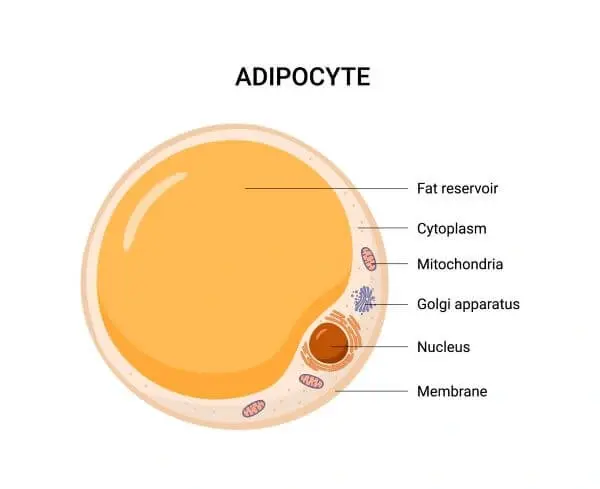
PROMO!
First order? Get 10% OFF with this code: 1storder
Written by

Fat loss peptides show promising results in scientific investigations. These synthetic compounds target specific biological pathways involved in metabolism and fat breakdown. This supports metabolic health.
Studies indicate that peptides like FTPP Adipotide, AOD-9604 and Tesamorelin demonstrate potential effects on adipose tissue reduction and visceral fat. This contributes to improved weight management.
At Peptide Works, we supply these research-grade compounds to laboratories worldwide. Scientific findings suggest fat loss peptides may influence lipolysis, metabolic rate, and body composition. They may also promote healthy fat storage regulation and support lean muscle mass.
However, these compounds remain strictly for research purposes only. Ongoing investigations continue to reveal new mechanisms of action in recent studies.
Understanding their effectiveness requires examining the specific mechanisms these compounds use to target fat tissue.
Explore FTPP Adipotide from Peptide Works, a peptide studied for its ability to target fat tissue through blood vessel disruption.

Fat loss peptides work through three main targeting methods. They activate lipolysis enzymes that break down triglycerides within fat cells. This process releases fatty acids and glycerol into circulation and supports overall metabolic health.
These compounds can also boost metabolic pathways that increase energy use throughout the day. They may influence blood sugar levels and the release of growth hormone from the pituitary gland in both research and clinical settings. Some specific peptides, like FTPP Adipotide, directly target blood vessels that feed adipose tissue.
This selective targeting helps destroy fat deposits. Some peptides may also help preserve muscle mass and contribute to significant weight loss outcomes in studies. Lipolytic peptides bind to specific receptors on fat cells. Adipotide binds to receptors on the endothelial cells that line blood vessels supplying fat tissue.
This targeted approach helps explain why certain peptides show effectiveness in laboratory testing. FTPP Adipotide stands out for its unique approach and remains under active scientific investigation for its vascular-targeting mechanism.
FTPP Adipotide uses a unique prohibitin targeting system. It works unlike other fat loss peptides, which are chains of amino acids studied for their biological effects and potential roles in supporting overall health. Most peptides boost metabolism or hormone levels to burn fat naturally.
FTPP targets ANXA2 and prohibitin receptors on blood vessel walls. This triggers apoptosis in the endothelial cells that line adipose tissue blood vessels instead of causing metabolic changes.
The peptide binds only to white adipose tissue vessels. Tesamorelin helps maintain lean muscle mass through growth hormone elevation. AOD-9604 activates beta-3 adrenergic receptors to stimulate direct lipolysis.
FTPP’s vascular-targeting approach makes it distinct from hormone-based fat-loss compounds. It represents a different approach to targeting fat cells. The apoptosis process triggered by FTPP selectively eliminates fat cells through ischemia-induced apoptosis, setting it apart from other peptides studied for fat-loss mechanisms.

Apoptosis triggers programmed cell death that eliminates fat cells permanently. The process starts when caspases activate inside adipocytes to break down cellular components.
Dead fat cells release their stored lipids into surrounding tissue for removal. Immune cells called macrophages then clear away the cellular debris completely.
This elimination reduces total fat cell numbers rather than just shrinking existing cells. Unlike temporary fat loss, apoptosis creates lasting tissue reduction through permanent cell destruction.
The body cannot regenerate these eliminated adipocytes once apoptosis completes the death process. The cleanup process after apoptosis reveals how immune cells become essential partners in fat reduction.
Immune cells support fat loss through three main cleanup and regulation functions. Macrophages remove dead fat cells after apoptosis occurs in research studies.
T cells help control inflammation levels that affect metabolic rate and fat burning. Some immune cells like iNKT cells trigger proteins that convert white fat into brown fat.
Research shows peptides like Tesamorelin boost adiponectin production, which regulates immune cell activity. AOD peptides work through growth hormone pathways that also influence immune cell function.
These immune responses help maintain healthy fat tissue metabolism during peptide research protocols. This conversion from white to brown fat represents another critical pathway for enhanced fat burning.
Explore Tesamorelin from Peptide Works, a peptide studied for its effects on reducing abdominal fat and improving body composition.

Brown fat activation supports weight loss through thermogenic mechanisms that fat loss peptides trigger. Uncoupling protein UCP1 burns calories to produce heat instead of storing energy.
This process burns up to 20 times more calories than regular white fat. Research shows activated brown fat increases total energy expenditure throughout the day.
Studies indicate weight loss peptides like AOD work through beta-3 adrenergic receptors. Brown fat activation improves glucose metabolism and reduces blood lipid levels.
This metabolic boost creates negative energy balance for sustained fat reduction. The beta-3 receptor mechanism highlights why AOD peptides demonstrate such remarkable effectiveness in research.
AOD peptides offer selective fat reduction effectiveness that other fat loss peptides cannot match. These compounds derive from growth hormone fragment 177-191 that targets fat metabolism specifically.
Unlike full growth hormone, AOD works without raising IGF-1 levels or affecting blood sugar. Research shows AOD activates beta-3 adrenergic receptors while inhibiting lipogenesis simultaneously.
This dual action creates targeted fat breakdown without muscle growth effects. AOD peptides demonstrate significant body weight reduction in laboratory studies.
The selective mechanism makes AOD highly effective for stubborn fat elimination. These impressive claims require validation through rigorous scientific testing to establish credibility.
Explore AOD-9604 from Peptide Works, a peptide investigated for its role in fat metabolism and selective fat breakdown.
Science shows strong results when testing fat loss peptides on animals. FTPP Adipotide helps reduce body fat in test animals over many months. AOD compounds show steady fat loss with few side effects during testing.
Tesamorelin helps improve body shape by reducing belly fat in test subjects. Science proves AOD peptides help animals lose weight when tested properly.
Most test subjects reach good weight loss goals in these studies. These results show peptides work well for research use only.
Current research success points toward exciting developments in peptide science and applications.
The future of fat loss peptides looks bright with more research happening every day. Scientists are making these peptides work better with fewer problems during lab testing.
Researchers continue to study different types of peptides for fat reduction. Tesamorelin has shown proven results in clinical trials, while preclinical studies support the effects of AOD-9604 and Adipotide in laboratory models.
As online retailers, Peptide Works brings trusted research peptides to scientists worldwide with fast shipping. These new developments may change how researchers study fat loss in laboratory settings.
All products discussed are supplied for research purposes only and are not intended for human use.
References:
[1] Kim JY. Optimal Diet Strategies for Weight Loss and Weight Loss Maintenance. J Obes Metab Syndr. 2021 Mar 30;30(1):20-31.
[2] Gao Y, Yuan X, Zhu Z, Wang D, Liu Q, Gu W. Research and prospect of peptides for use in obesity treatment (Review). Exp Ther Med. 2020 Dec;20(6):234.
[3] Heffernan M, Summers RJ, Thorburn A, Ogru E, Gianello R, Jiang WJ, Ng FM. The effects of human GH and its lipolytic fragment (AOD9604) on lipid metabolism following chronic treatment in obese mice and beta(3)-AR knock-out mice. Endocrinology. 2001 Dec;142(12):5182-9.
[4] Barnhart KF, Christianson DR, Hanley PW, Driessen WH, Bernacky BJ, Baze WB, Wen S, Tian M, Ma J, Kolonin MG, Saha PK, Do KA, Hulvat JF, Gelovani JG, Chan L, Arap W, Pasqualini R. A peptidomimetic targeting white fat causes weight loss and improved insulin resistance in obese monkeys. Sci Transl Med. 2011 Nov 9;3(108):108ra112.
ALL CONTENT AND PRODUCT INFORMATION AVAILABLE ON THIS WEBSITE IS FOR EDUCATIONAL PURPOSES ONLY.
DISCLAIMER: These products are intended solely as a research chemical only. This classification allows for their use only for research development and laboratory studies. The information available on our Peptide Works website: https://peptide-works.com/ is provided for educational purposes only. These products are not for human or animal use or consumption in any manner. Handling of these products should be limited to suitably qualified professionals. They are not to be classified as a drug, food, cosmetic, or medicinal product and must not be mislabelled or used as such.
Peptide Works
Related Articles

How effective could Orexin Addiction Therapy be?
Have you ever wondered why some people find it so hard to stop addictive habits, even when they truly want

Can NAD Therapy Improve Cognitive Performance?
NAD Therapy is gaining attention in research for its possible role in brain health. NAD+ (nicotinamide adenine dinucleotide) is a

Enhancing Energy with NAD+ Supplements
Energy is the driving force behind focus, movement, and recovery. When cells have less energy to work with, the body